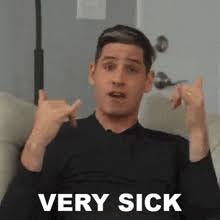This month we’re focusing on one of the most important issues we’re all facing today, but not enough people are talking about: our urgent needs for creating new solutions. Not just for software or AI, but for everything in our lives, our teams and our communities. And we’re talking about where the most important innovations come from (hint: probably not where you thought).
This month is also the re-launch of Everybody Innovates Here, my book that explains why so many of our innovation and entrepreneurship ecosystems fail to move the needle for our communities, and what we have to do to make them work the way they should. You’ll see posts and videos about Everybody Innovates Here across your socials this month. And Change Maker (paid) subscribers to Future Here Now will receive a code next Friday, July 18 for a hefty discount on the book and on workshops!
This book never got the daylight it deserved thanks to COVID, and I’m thrilled to be able to share it. If you are not a Change Maker subscription, you can get that discount code too – all you have to do is sign up before Friday! And to sweeten the deal, I’ll give you 25% off that subscription – but this will be gone fast.
Most of our ecosystems are pretty sick. And not in the good way.
What we often call “ecosystems” – innovation ecosystems, or entrepreneurship ecosystems, or downtowns and neighborhood districts - actually lack a lot of the characteristics of a functioning natural ecosystem. They’re more like a pile of fragments, a bunch of stuff that sort of co-exists, rather than anything that benefits from the presence of the others. It’s like expecting a bunch of trees to create healthy soil with all the worms and microbes, when we’ve left them in their planters and dropped them in a vacant lot.
True, sometimes we get lucky -- a breakout success, a heartwarming story. Maybe even a few of those. But when you look at hard economic data for the district, the city, the ZIP code, too often you can't even see a blip.
Which makes it hard to conclude anything but this: what we're doing isn't adequate.
What's that old definition of insanity again?
—
Consider some of the challenges that entrepreneurs and innovators are facing:
How can I grow my small business when almost every possible thing is available on line - for a fraction of what I have to charge?
How do I get my app built when I don’t look like the kind of person the VCs invest in?
Why should people come downtown when they can get our food delivered to their home or office?
I can learn how to start a business on Coursera. But how do I get it to grow?
Deep, serious challenges. And even more so for people who don’t have the time to wander through your assorted programs trying to find the actual, practical help they need.
People who have jobs they have to keep to pay their bills, and feed their kids, and take care of elderly parents. And who may need to build a business, but have never known anyone who has done that before.
Here’s the kicker: those are the people we need innovating and entrepreneur-ing more than anyone else. We need what they have learned, what they have discovered through their unique experiences, the challenges that they have faced first hand. The people who have seen what the rest of us have not, who can spot the opportunities that those of us who have been treated better by life almost always miss.
We don’t need another Uber for dog walking. We don’t need another of the same kind of restaurant or thing-maker or whatever that is just the slightest variation on the 900 we already have, especially when we’re swamped with products online and off. Especially when the younger generations that are coming up are buying less, and buying more second hand, walking away from the blind consumerism we’ve pursued for so long.
We need solutions. Solutions to the challenges in front of us, and in front of the people who have been ignored through our decades of mass consumption. And that means that we have to bring more people into the work – into innovation and entrepreneurship. More of the people we’ve historically left out.
But to do that, we have to make our “ecosystems” work for them. We have to create the integrations, the interdependencies, the dense web of connection that allows an ecosystem to create something more than its parts. Something that equips, enables its parts to thrive.
That takes more than a pitch night and a webinar on marketing. It takes an ecosystem. One that actually acts like one.



